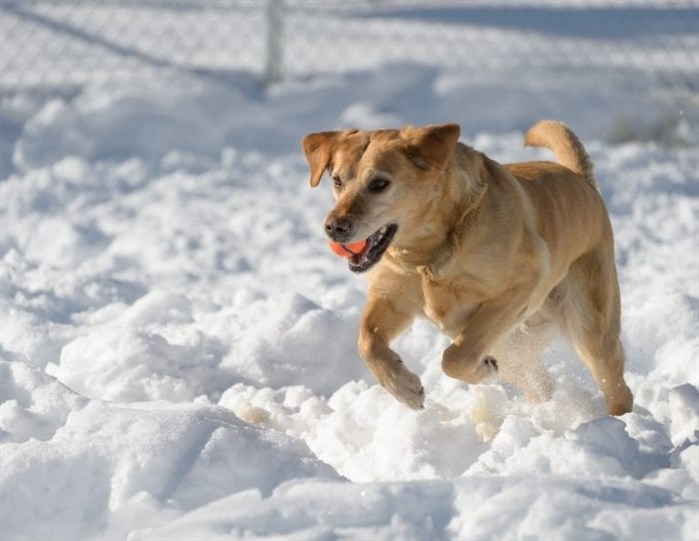How to protect your dogs and cats during winter cold snaps
The winter season brings certain hazards to pets, such as road salts and antifreeze, and during periods of extreme cold, you can add frostbite, hypothermia and warm car engines to the list.
There are ways to lower the risk of these hazards for pets, signs of injuries to look for and ways to treat them, according to a post by BC SPCA.
Salt and sand used for de-icing roads and sidewalks can get stuck in between your pet’s toes and dry onto their paw pads causing sore paws and irritation. There is a chance the damaged skin can lead to dermatitis if the salt is not wiped off. When dogs ingest the salts it can cause stomach upset and electrolyte imbalances, according to BC SPCA.
Paws should be properly cleaned and dried after walks.
A common threat to pets during winter is antifreeze, which is attractive to pets because of its sweet taste. One tablespoon of ingested antifreeze can kill a cat or small dog.
“Use pet-safe, propylene glycol-based antifreeze instead of ethylene glycol-based antifreeze, which is toxic to wildlife and pets and has a sweet taste which attracts animals,” said BC SPCA in the post. “There are great options for animal-friendly antifreeze that has anti-corrosive properties, is biodegradable and is recyclable.
READ MORE: Leaving cats in the cold is not cool: Okanagan Humane Society
Just like humans, pets are susceptible to frostbite, and cats and dogs are particularly vulnerable to frostbite on the tips of the ears and paws. In extremely low temperatures, BC SPCA said pets should only be outside for short periods of time.
Puppies and older dogs are at greater risk of frostbite because they can’t control their body temperature as well, while dogs with heart disease or diabetes are at more risk because their conditions reduce blood flow to their extremities.
Warm clothes and booties are helpful but only if your dog or cat will wear them. SPCA suggests training to pets wear coats and booties ahead of time to get them used to it.
Signs of frostbite are pale grey or bluish skin, pain and swelling in the area, cold and brittle skin, blisters or skin ulcers and areas of blackened or dead skin.
Frostbitten pet parts should be warmed up in a bowl of lukewarm water, and never dry heat. The area should be patted dry and the pet taken to the vet.
Don’t try to warm up the pet unless you are somewhere you can keep the area warm, as refreezing can cause more damage.
“When the dog starts to warm up their frostbitten paws can become red and painful,” said BC SPCA. “Your local vet may give your dog pain medication to help keep your pet comfortable during the healing process. If the frostbite is more severe, the dog may require antibiotics to prevent a secondary bacterial skin infection.”
READ MORE: Nine puppies rescued from unheated basement in North Okanagan home
Signs of hypothermia are shivering, pale or grey gums, lethargy and lack of coordination.
Outdoor cats will find warm places during cold snaps and one of the most dangerous one is next to a warm car engine, like one in a car that was just parked. Cats can be killed or injured when the car is started. Owners can thump on the car and look under the hood before starting their cars.
The BC SPCA strongly urges guardians to keep all animals indoors during cold weather.
To contact a reporter for this story, email Shannon Ainslie or call 250-819-6089 or email the editor. You can also submit photos, videos or news tips to the newsroom and be entered to win a monthly prize draw.
We welcome your comments and opinions on our stories but play nice. We won't censor or delete comments unless they contain off-topic statements or links, unnecessary vulgarity, false facts, spam or obviously fake profiles. If you have any concerns about what you see in comments, email the editor in the link above.




